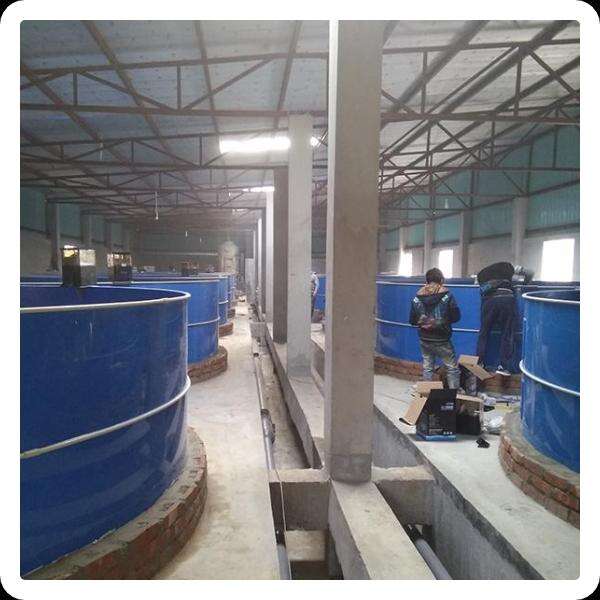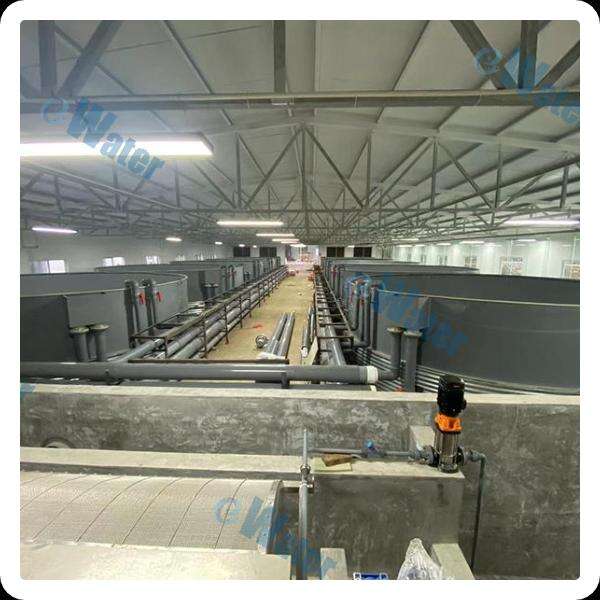How RAS Revolutionized Aquaculture
Are you curious about how fish and other aquatic animals are raised in farms? Introducing RAS: a cutting-edge technology that has transformed the way we eWater ras system aquaculture.
RAS stands for "Recirculating Aquaculture System." It's a system that allows farmers to grow fish and shellfish in a controlled environment, using limited amounts of water. This has several advantages over traditional methods of aquaculture, including:
- Reduced water usage: eWater recirculation aquaculture system ras uses only a fraction of the water used in traditional fish farming. This is because the water in RAS is constantly recirculated and filtered, rather than being replaced every day.
- Consistent water quality: In RAS, water quality is carefully monitored and adjusted as needed. This creates an optimal environment for fish to grow and thrive.
- Disease control: Because RAS is a closed system, it's easier to prevent and control diseases that can spread in open water systems.
- Increased production: RAS allows farmers to grow more fish in a smaller space than traditional methods. This is because the water in RAS is carefully controlled and optimized for fish growth.

While RAS technology has been around for decades, recent innovations are making it even more efficient and effective. For example:
- Automation: Many aspects of eWater recirculation aquaculture can now be controlled with computers, reducing labor costs and increasing precision.
- Energy efficiency: new technologies are making RAS systems more energy-efficient, lowering costs and reducing carbon emissions.
- Improved filtration: Advances in filtration technology are making it possible to remove even more waste and contaminants from the water, creating a cleaner and healthier environment for fish.

RAS is a safe and effective way to grow fish and shellfish. It's used by hundreds of farms around the world to produce high-quality seafood. Here's how RAS works:
- Water is taken from a source, such as a well or municipal water supply.
- The water is treated to remove any contaminants and adjusted to the optimal pH and temperature for fish growth.
- Fish are placed in tanks or ponds filled with the treated water.
- The water is continuously filtered and recirculated, with additional treatments added as needed.
- When the fish are ready for harvest, eWater recirculating aquaculture are removed from the system and processed for sale.

If you're interested in using RAS for your aquaculture operation, here are some steps to take:
- Research: Learn as much as you can about RAS technology and how it's used in aquaculture.
- Planning: Determine if eWater ras system in aquaculture is the right choice for your operation, and develop a plan for implementing the technology.
- Installation: Work with a reputable RAS supplier to install the system, including tanks, pumps, and filters.
- Operation: Establish a routine for monitoring and adjusting the water quality, feeding the fish, and maintaining the equipment.
- Service: Regularly schedule service and maintenance for your RAS system to keep it running smoothly and ensure optimal fish growth.
eWater constantly ras in aquaculture innovative RAS solutions lowered energy consumptions better productivity. been able successfully deliver than 400 RAS across globes September 2022.
eWater manufactures majority RAS equipment. 2018, developed Gen-3 rotary drum filters, ras in aquaculture proteins skimmers, Gen-3 oxygenation. We offer 3 year guarantee committed providing product-lifequality technical support. Since 2016, we been ISO/CE certified.
eWater ras in aquaculture aquaculture provider company, specialising Recirculating aquaculture systems, collaborates customers finding most effective solution needs.
We bring engineers ras in aquaculture site assist installation qualification. create RAS detail-oriented prints customers overseas get basic building ready work practicable plan including timeline labor requirements prior installation.
Our professional sales team are waiting for your consultation.